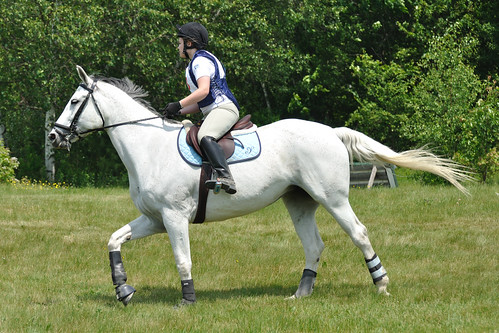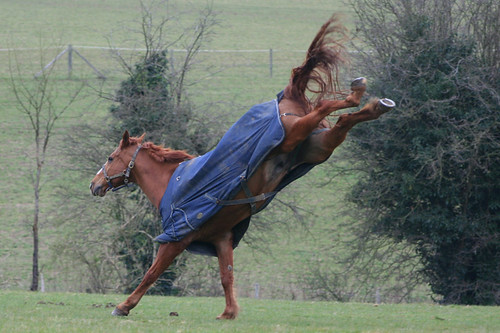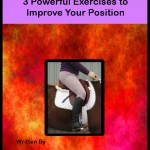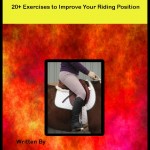Getting Show Ring Ready – Equitation Class

![]() photo credit: Selective Focus Photography
photo credit: Selective Focus Photography
Getting your horse ready and prepared for the showring is only half the battle. The other half is the rider. This is of particular importance when preparing for equitation classes.
What is Equitation
For those new to horse shows or wanting to learn more, equitation is judged on the rider. Rider position, turnout and effectiveness is judged. Where hack and undersaddle classes are judged on the horse, the horses movement, performance and possibly conformation, equitation is the riders seat, legs and basically their position.
A polished equitation rider has an independant seat and can show the horse to the best of its ability.
How To Win In Equitation
Equitation riders are students of the art of riding. There are no shortcuts to a winning equitation round. It takes years of training and lots of hours in the saddle developing a solid foundation of support and basic skills. To win an equitation round of class the rider has to get the judges attention. It will be flawless and flow smoothly and immediately catch the judges eye as soon as the entry comes in the gate.
For ‘flat’ equitation classes, riders should use invisible aids. This means that the judge should not see any movement, kicking and clucking or pulling is a sure way to grab the judges eye but not in a good way. Riders should be straight without being stiff and rigid. The first thing a judge will look for is a secure heel.
Heels
If the heels are not down in a natural secure fashion then the judge will pass you by. Jammed down heels in a forced fashion may look acceptable but usually come unglued as the class progresses. The foundation of a strong position is a secure base and that begins with a secure leg and heels firmly and securely down.
To keep riders in balance there should be a straight line ear, shoulder, hip and heel. This is important to develop this line to achieve a secure seat in the saddle. By connecting an imaginary line from ear, shoulder, hip and heel it will provide riders a base line of where the riders body should be.
If the straight line is missing a component. For example the heel is shooting out in front of the rider, then the rider is not in balance and not secure. The leg shooting out in front is called the “chair seat” by the way, and is one of the most common rider errors.
Legs
A secure leg will give a rider a pleasing and secure appearance on the horse. In an effort to keep their legs still novice riders often use an uneducated grip to hold their leg in position. This will cause the rider to squeeze and pinch with their legs rather than developing a secure educated heel and leg postion.
The most common error is a pinched knee. This causes gripping at the knee which in turn leads to a loose lower leg. The pinch at the knee creates a pivot point which often results in a lower leg that swings which is ineffective. It is kind of like putting a small paper clip on a wad of too many papers. it will ultimately slip off. Rather than pinching the knee to develop a secure seat, riders should sink into a deep heel and develop a secure foundation.
Mush has been said about the riders feet and toes. Toes should be at an angle best suited to the rider. Toes which are stuck out prevent a secure leg from forming and usually result in a forced gripping leg. Toes in or pigeon toed appearance restrict the ability to use the leg correctly.
Hands
A riders hands and arms are noticible and can result in a poor placing if they are not positioned and used correctly. A seasoned rider will have a straight line from elbow, hand to horses mouth. This will insure a direct line of contact with the horse. Hands should rest in a natural position above and in front of the horse’s withers. Ideally the hands should be far enough apart that when the rider outstretches his/her thumbs they can touch each other.
Hands, ideally, should be with the knuckles 30 degrees inside the vertical. By keeping this in mind it will avoid flat harsh ands and/or stiff verticle fists.
Basic Position
Generally speaking riders should have a neat workmanlike appearance with seat, hands and legs being used in a supple and controled fashion. The riders eyes should be up and shoulders square.
Worst Riding Error
I think the worst riding error is bad hands… What do you think the worst riding error is?
Hands can cause pain. Bad uneducated hands shows the lack of finesse and dedication necessary to control a horse. A rider with bad unfeeling hands is literally holding on for dear life. what do you think?

 Try these three powerful exercises to get strengthen your position.
Try these three powerful exercises to get strengthen your position.

Hi, i’m french, sorry for my english. It’s impressive the photo heels
i agree with hands! its my biggest annoyance when i see riders with “piano hands” or like very unsteady and can’t hold them still. I like to think as my elbo as a hinge to keep my hands steady and I also hate when riders have a “chair seat” and swingy leg! I’m not the best equitator but I don’t have a chair seat, unsteady hands and my leg does not move 🙂
My hands, head and seat it good but not my toes they are looking lik donald duck but I’m practising, thanks for the advice, and you have to Smile when riding it just looks prettier and be neat!
Thank you for your comments. I appreciate them. Smiling is important. It conveys a confidence to your horse and to the people watching.
~Laura